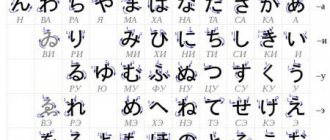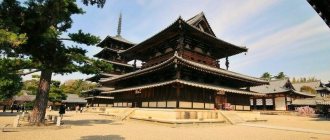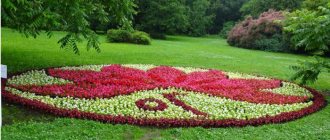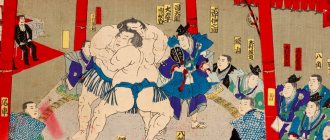Home page Wildlife World of plants
165 672 4.24 18
When the god of the mountains invited Ninigi, the grandson of the Sun goddess, to marry one of his daughters, he decided that if he gave preference to the eldest, High Rock, the life of their descendants would be eternal and durable, like stones. But if he prefers the youngest, Blooming, then the life of their children, regardless of social status, will be beautiful, but short, like cherry blossoms. Ninigi chose Blooming and became the ancestor of the Japanese emperors.
The Japanese, annually contemplating the beauty of this amazing plant and looking at the fragility of its flowering, reflect on the fact that beauty does not last forever, and life is fleeting and fragile. Therefore, it very much resembles a crumbling sakura flower - although it is beautiful, it leaves too soon: it is not for nothing that cherry blossoms symbolize the frailty of life and the fickleness of existence.
Sakura is the national symbol of Japan
Ask any person what associations arise with the country of Japan? Many will answer - “Cherry blossoms.” And this is absolutely true. In the modern world, Japanese cherry trees are commonly called sakura. But in fact, this is a general, collective name.
The Japanese celebrate not only state and religious holidays, but also holidays associated with natural phenomena. One of these, and perhaps the main one, is Hanami (flower admiration).
Waiting for the Japanese miracle
Sakura blooms from a week to 10 days.
On the southern Japanese islands, sakura begins to bloom in February, in the central part of the country, including Tokyo, at the end of March, but in Hokkaido only at the beginning of May. It is possible to observe this flowering of nature for two months while moving around Japan. However, many citizens of the island nation choose to stop their lives for a few days at a certain period of time. Local media actively remind them of the upcoming holiday. Since the end of winter, Japanese television has produced an endless number of reports about hanami. Millions of tourists from all over the world follow the news, filling the country with their presence during this period. The most successful ones even manage to see the sacred Mount Fuji through the branches of cherry blossoms, which evokes unforgettable emotions. Just as in 1598, when the Hanami holiday was given official state status by military leader Toyotomi Hideyoshi, modern Japanese use this opportunity to feel the frailty of human life and simply relax. Japan is infected with workaholism. Here people die from overwork, abandon their families and children, and all just to fulfill their duty to their own state. Hanami is an opportunity to take a breath without feeling guilty. Therefore, saving the lives of their fellow citizens, Japanese magazines also began to report on the beginning of flowering of other plants growing in Japan: from lilies of the valley to tulips. But this measure does not really help.
Hanami - public holiday
The Japanese give it a special meaning - comparing the blooming of flowers and their falling with the transience and beauty of life.
Hanami's story
Khanami has been celebrated for many centuries. In the 7th century, Japanese aristocrats of that time began the tradition of having picnics during cherry blossoms. Sitting under the flowering trees, they enjoyed their aroma, beauty, music, games and drinks. They wrote poems and paintings praising this stunningly beautiful spectacle.
This is not an official holiday and its beginning is considered to be with the opening of the first buds on the sakura, which grows in Tokyo, in the ancient Buddhist temple of Yasukuni. Meteorologists report this event on television.
- 11 facts about tourism that will convince you to urgently pack your bags for a trip
The opening ceremony of the Hanami holiday is attended by many famous people in Japan and the imperial family (chetai).
Sakura does not bloom for long, about two weeks. Then come white and pink “blizzards” of falling petals. And not only the Japanese themselves, but also numerous tourists are in a hurry to enjoy the stunning spectacle of cherry blossoms.
What does sakura mean in feng shui in the house?
Who is it suitable for?
For residents of the Land of the Rising Sun, cherry flowers are a very pleasant and symbolic gift, and its presentation is a wish for prosperity, longevity and peace. Such gifts are especially in demand at weddings; they are often brought to young spouses to emphasize their respect and deep friendship.
- For a couple, planting sakura in the yard is a favorable omen, promising a life of harmony and love.
Where to place it?
Since it is not so easy to grow sakura in an ordinary modern apartment, you can get by with its symbolic image: embroidery, photography, painting.
- According to Feng Shui, such a talisman should be placed in the South-West, in the Marriage Zone.
In this case, he will act as an activator of the love Sector - he will help build a harmonious union based on trust, preserve passion and romance for many years.
Cherry blossom period
This is the most awaited and favorite time of the year for the Japanese. As soon as sakura is dressed in white and pink flowers, almost all of Japan goes to the parks. Particular importance is attached to corporate picnics. It is not accepted to refuse - it is impolite.
They buy plastic mats, drinks, traditional snacks and, armed with cameras, enjoy this miracle of nature in a relaxed atmosphere.
The parks are especially crowded after dark. Paper lanterns are hung on cherry blossoms or placed under trees. This creates a mysterious atmosphere. Sakura blooms from late March until May. A "wave" of cherry blossoms is moving from the south of Japan to the northern part of the country.
Many Japanese and tourists move along with this “wave” to admire this stunning spectacle.
The cherry blossom season dresses the country in the most delicate shades of white and pink. Envelops with an intoxicating aroma. This is a beautiful and breathtaking sight.
Well, did you want to plunge into the aroma of cherry blossoms? Japan is waiting for us to visit!
Description of the tree
Sakura is the name given to trees of the rose family, subfamily of plums (species: small-serrate cherry), most of which perform a purely decorative function: they bloom, but do not bear fruit (unlike other trees of its species, Japanese sakura is grown not for its berries, but for its flowers). There are 16 types of sakura and more than 400 varieties.
Despite the fact that sakura trees can be found mainly in the south of the northern hemisphere: in China, Korea, and the Himalayas, the largest number of trees of this type grows in Japan: nine out of sixteen species and a considerable number of varieties. There are especially a lot of someyoshino (white sakura with huge flowers) and shidarezakura (weeping willow) here - this color of sakura has a pink tint.
Sakura grows very well next to other plants of its species, which, depending on how they were planted, produce a different impression. For example, tree branches planted in parallel rows can intertwine with each other at the top, forming a blooming arch above your head - this looks especially chic if at this time the flowers have already begun to gradually fall and a person is walking on the carpet that the sakura petals created.
The oldest trees in the world451654.118
The height of the plant depends on its age, but is usually about 8 meters (but there are also taller trees, for example, one of the oldest sakura in the world, whose age is 1800 years, has about 24 meters in height).
The bark is smooth, cut across the entire surface of the tree with small horizontal cracks of a gray, green or red hue, and the wood of the tree is very flexible due to the high amount of resin in it.
The leaves are oval or spear-shaped with slightly serrated edges. When a sakura branch blooms, it is completely covered with flowers, mostly white or pink, with each inflorescence consisting of several double flowers, usually having 5 petals. The Japanese managed to develop species whose flowers contain about 50 petals, the diameter of which is about 50-60 mm - in appearance they even resemble roses, peonies, and chrysanthemums.
Sakura petals can be of different colors: white and pink sakura are common, but you can often see flowers in red, crimson, yellow and even green and variegated tones. Since sakura flowers bloom even before sakura leaves appear on the tree, it seems as if a huge number of delicate inflorescences are clinging to a dead and bare trunk (which is why the flowering period in Japan is also associated with rebirth).
When the sakura petals begin to fade, but have not yet fallen from the tree, and the sakura branch is overgrown with the first leaves, the plant looks extremely elegant and summery (the Japanese call it Ha-Zakura, which means “sakura with leaves”).
Few trees of this type bear fruit, and if they do produce a harvest, the sakura fruits (sakurambo) are usually very small, cherry-colored, have a large seed, tightly covered with thin pulp, and taste very sour and tart. They are sold in small boxes and are extremely expensive.
Diseases and pests
Sakura is susceptible to the same basic diseases as species grown for their fruit:
- coccomycosis;
- moniliosis;
- rust;
- perforated spotting, etc.
The most common of them is coccomycosis , so it is imperative to take preventive measures to prevent the pathogen from multiplying.
Since sakura is grown exclusively for decorative purposes, preventive spraying can be carried out as needed.
The only exception is the flowering period, because... the ingress of chemicals onto the petals can dramatically reduce the decorative effect.
The same preparations are suitable for spraying as for other fruits.:
- Bordeaux mixture;
- copper sulfate;
- complex fungicides (Skor, Horus), etc.
More information about cherry diseases and pests can be found in this material.
How to grow: care rules
Plants require regular watering, fertilizing and pruning. During the season, 2 feedings are carried out :
- In spring, it is necessary to apply organic and mineral fertilizers with a high concentration of nitrogen. For example, 5-10 liters of rotted manure and 10-15 g of mineral fertilizer.
- In August, it is necessary to apply phosphorus-potassium fertilizers (in accordance with the instructions). It is these substances that help prepare for low winter temperatures and achieve maximum winter hardiness. It is recommended to avoid complex preparations in order to completely eliminate nitrogen from autumn fertilizing.
Regular pruning is a good idea. It performs 2 tasks:
- Maintaining plant health by regularly removing damaged, dried and diseased branches, as well as thinning the thickened crown.
- Plant formation.
The frequency of watering depends on the growing region. Sakura does not tolerate waterlogging well, but drying out the soil also has a bad effect on the condition of plants, especially young seedlings. Therefore, several waterings per season will be mandatory :
- during bud break;
- during or after flowering (about caring for cherries during flowering - here);
- autumn moisture-charging irrigation.
In regions with severe frosts, it is recommended to wrap trunks and thick skeletal branches with thick covering material to protect them from damage and frost damage. Young plants and low-growing species can be completely covered.











